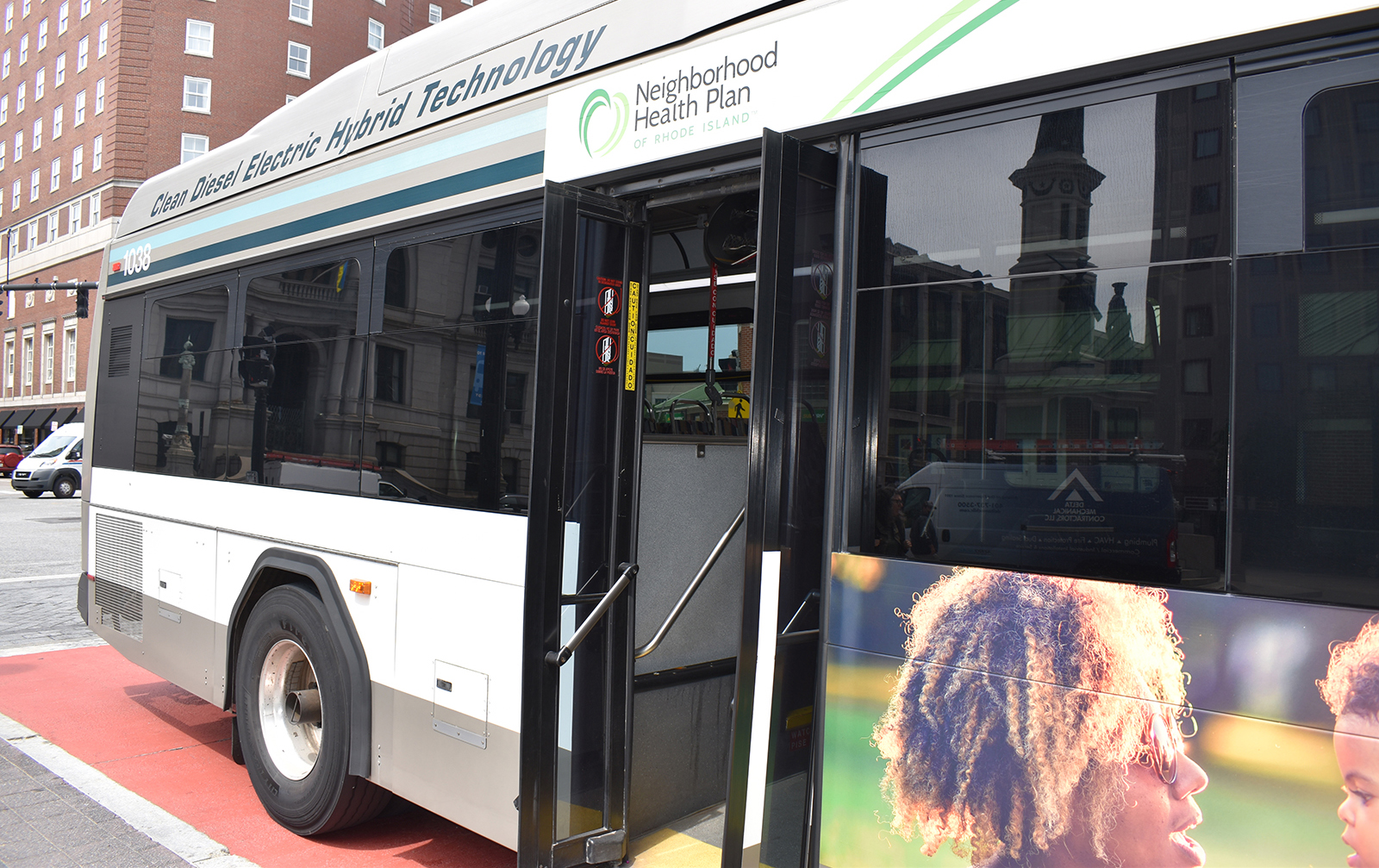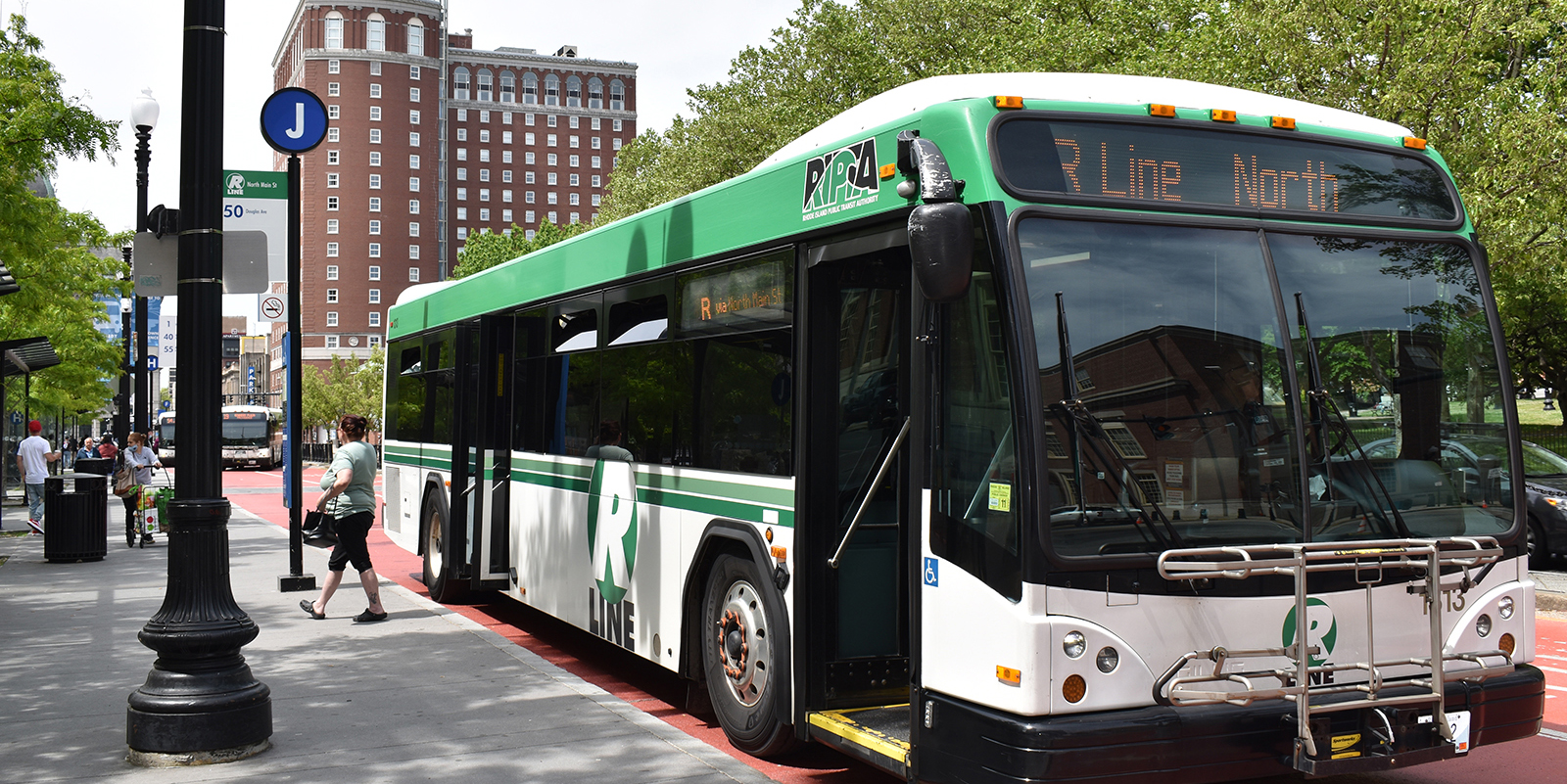RIDOT Again Plans to Take Money from Bicycle, Pedestrian Projects
August 17, 2019
PROVIDENCE — Patrick MacDonald’s first memory after the accident was waking up in the intensive-care unit and thinking it was the coffee shop in which he worked. Why was he tied down, he wondered, and why was his vision suffused with green light?
On Dec. 12, 2018, MacDonald, a resident of North Providence who was living in Savannah, Ga., for the winter, was bicycling to work through an industrial area when a car turned left across the two-lane road and T-boned him.
MacDonald was rushed to the hospital, where over the next 11 days doctors first treated two brain bleeds and two collapsed lungs before removing a shattered vertebra in his lower back. He also sustained a fractured skull and other injuries, including memory problems.
The experience has strengthened his resolve that more needs to be done to keep bicyclists safe. Simply designating certain streets as bike routes — as was the case on the Georgia road where his accident occurred, and is commonly the extent of the safety measures extended to cyclists in Rhode Island — doesn’t cut it.
“I think the only way to fix the problem is to have isolated routes [for cyclists],” he said. “Keep the 4,000-pound steel boxes away from the very flimsy meat shell that we all kind of operate in.”
Unfortunately, isolated bike lanes and other solutions that would protect the road’s most vulnerable users in Rhode Island are now in peril. On July 18, the Rhode Island Department of Transportation (RIDOT) proposed $37 million in funding cuts that would delay, reduce, or eliminate improvements to bicycle and pedestrian infrastructure.
The cuts, outlined over a sprawling 268 pages and collectively called Major Amendment 19, would impact numerous programs in the State Transportation Improvement Program (STIP). One particular program, the Transportation Alternative Program (TAP), covers improvements to pavement, trails, sidewalks, and bridges, as well as paths for bicycles and pedestrians. It also contains projects that would improve access to sidewalks for individuals with disabilities.
Key projects affecting cyclists and pedestrians that would lose the most funding include the Bicycle Mobility Plan, which supports improvements in bike infrastructure and Safe Routes to Schools projects, a program that promotes city planning and education to increase the number of kids safely cycling or walking to school.
Other projects, such as paving the Trestle Trail in Coventry, would boost tourism and better connect Rhode Island to the wider region. The rail-corridor-turned-bike-and-walking path that, in part, hugs the Pawtuxet River is only paved for half of its 10 miles. More than $5 million have been allocated to pave the western portion of the trail, which would link Rhode Island to Connecticut.
These latest proposed funding cuts come on the heels of a similar proposal. In February, RIDOT proposed Major Amendment 11, a set of similar changes that would have delayed, reduced, or eliminated up to $28 million in TAP funding had it been approved.
Before the approval process progressed to the stage of public hearings, however, RIDOT withdrew the amendment, stating as the reason “a new infusion of federal dollars.”
Kathleen Gannon, vice chair of the Rhode Island Bicycle Coalition, a Providence-based advocacy group, doesn’t buy RIDOT’s explanation. She attributed the withdrawal of the previously proposed changes to the strong public outcry against it. As she sees it, an important contributing factor was her group’s large-scale campaign encouraging residents to express their opposition to the amendment by calling and sending cards to Gov. Gina Raimondo’s office.
This time around, Gannon is concerned that the timing of the amendment — the fact that many people who would ordinarily oppose such changes are currently out of town on summer vacation — could work in RIDOT’s favor. This, which Gannon considers part of RIDOT’s strategy to evade the will of the people, paired with false promises on the part of governor, has left Gannon cynical about the state’s support for bicycle and pedestrian infrastructure.
In a written statement Raimondo made to the Rhode Island Bicycle Coalition before she was first elected, she declared, “We must simultaneously ensure that our roads remain safe places for cyclists, by better training motorists, continually maintaining our roads (from curb to curb), and seeking out opportunities to create protected lanes.”
“It’s disappointing,” Gannon said. “[The governor] said all the right things about improvements for economic development, for safety, for health. But now it’s important that we press her that there really are funds to support that.”
As for MacDonald, eight months since the accident, he is still regaining what he lost. He has since relearned to walk and play the drums. Recently, when working as a bicycle mechanic, he came across a repaired bicycle and asked who had fixed it. It turned out he had repaired it himself the week prior.
But despite the fact that sometimes he uses a wheelchair to alleviate the pain in his left hip, he has taken up biking again. In fact, when he’s not repairing bikes, he works as a bicycle courier.
“I’m still in the game,” he said, with a laugh.
Public comment on the RIDOT amendment can be emailed to Michael D’Alessandro, supervising planner for the Department of Administration’s Statewide Planning Department, at [email protected].
Requests made by ecoRI News for interviews with officials from RIDOT and the governor’s office were not granted.




RIDOT’s excuse for cutting bike/pedestrian projects is that they must get our deficient bridges into satisfactory shape, and while we all agree on doing that, I’ll note one reason for the reduced bike/ped funding available is RIDOT’s desire to spend so much, about $125 million extra, to widen from about the I-95 northbound viaduct from mainly 4 lanes to 6. But before spending so much money on that, perhaps their I-95 wish should be put off until we see what strategies the regional Transportation Climate Initiative suggests to finally try to reduce transportation carbon emissions, and what the presumably soon to be released Transit Master Plan and Bicycle Master Plan suggest about resources need for those alternatives.